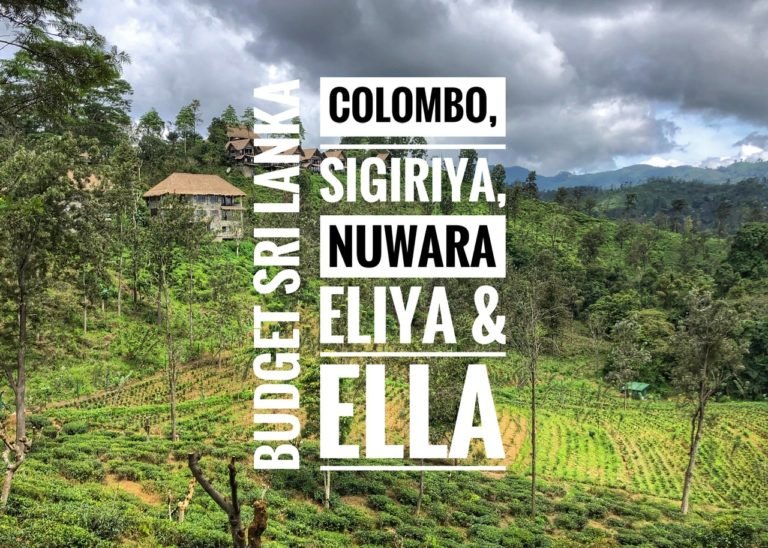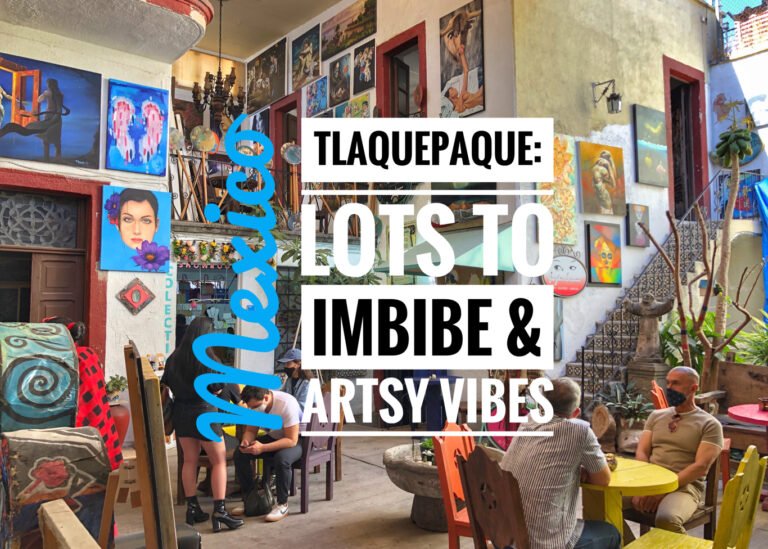
There’s actually a country wedged between Bulgaria, Greece, Albania, Kosovo and Serbia. Who knows it? Ah, it’s it the title. Sort of. The name of the country is a bit confusing, but we’ll glean over that little detail a bit later. (North) Macedonia is unfortunately often overlooked and although we didn’t overlook it, we’ll be the first to say we didn’t give it enough time or effort, having to chop off four days in order to get to a housesit in central Bulgaria. Add this to a sudden wave of travel fatigue which hit us in recent weeks, and we weren’t exactly raring to go.
This said, although our time there was short and sweet, it made us realize the potential of what it held hugged within its landlocked borders and because this country is also in the top ten countries worldwide to start a business, (according to the Worldwide Ease of Doing Business Index,) we’re keeping it on the back burner for sure.
This goes particularly for the little lakeside UNESCO world heritage wonder of Ohrid, three hours by bus from the capital of Skopje. It’s one of the oldest lakes in the world, sits on the border with our beloved Albania, and is undoubtedly the most visited attraction in the country. In fact, it was simply buzzing. Buzzing with mini doughnut vendors, roller blading whiz kids, fat guys in Speedos, and tourists, mostly of the local Balkan variety, not from further afield. Very notable to us was…people drinking beer…but no brewery. And the fact that every restaurant, bar and cafe was packed to the brim, all day everyday.

If you google Macedonia travel, you’ll most likely get a picture of the lake, but more particularly, a stunning shot of the 13th Century Saint John at Kaneo Church. Perched on the edge of a cliff atop the lake, it’s one of those places that’s simply impossible to take a bad picture. Unless you have a disposable camera or something.

The view of Ohrid from the church. Ohrid once had 365 churches…one for every day of the year, which gave it the nickname or the “Jerusalem of the Balkans.”

Looking toward the mountains from the walls of the Samuli Fortress, which was built in the place of an earlier fortification, dating to 4th century BC. Yes, Ohrid has been around for a LONG time.

The left behind Roman amphitheater in Ohrid.

Exploring the town…loved these fun stairs near the school. They reminded us of something you would find in Latin America.

A beautiful sunset overlooking the lake from Saint John.

We met up with Jenn and Steve, (@sjtravelagain) fellow travel bloggers from Philadelphia for a couple beers and to enjoy the sunset. They, like us, have been traveling for about a year so we had lots to share with one another. Plus, it’s always nice to speak English with native speakers so we don’t have to edit our idioms, slang and velocity of words.

Not a bad place to set up our morning office!

This seems to be the “marina” where all the locals store their little boats and dinghys. Many of them will offer to take you on a boat ride out to the smaller islands for a fee.
The Ohrid promenade offers countless places to jump into the refreshing lake water.

Ohrid is packed with shops, restaurants and wonderful people watching. Like in other Balkan countries, they all seem to take an evening walk every night sans smart phones.
We even stumbled upon some traditional folk dancers! But upon closer inspection, they appeared to be Czech…not Macedonian!
The next day, we took the three-hour bus ride back to the capital of Skopje. Arriving, we realized our place was about a 35-minute walk from the bus station. Since we weren’t feeling like mules that day, we were delighted to see google worked splendidly and told us the exact local bus to take. Yay! So we plopped down at the bus stop and waited for the number 44. Upon observation of other buses, it seemed unlike other Balkan cities in the fact you weren’t able to hand over cash in exchange for a ticket.
So Mandy turned to a local who conveniently spoke terrific English. His response…
“Ah, no. You have to use a Skopska card.”
Mandy: Okay, how do I get one of those?
Local: you buy one at the little stands…
Mandy: Great! What stand?
He points ambiguously down the road and before getting on his bus also mentions you can buy it through your phone.
Local: Oh, but you need a local number.
Perfect…so we began to walk aimlessly toward “the stand.” Twenty minutes later we had walked to about six different stands, each directed to by a different “helpful” local, and we still had no way to get on the bus. We slogged the 35 minutes toward our place and were grateful to land in a really nice full studio for the mere price of $13/night. Needless to say, we stopped by the market, turned on the English cable TV and didn’t leave for the remainder of the evening.

The next day, bound and determined to succeed at the simple act of riding the bus, we went through a similar process of trying to get a bus pass. About five stand stops into it, we finally landed a shiny “Skopska” card in this rather communist-looking box on the side of the road from an astonishingly friendly lady.

Yay! It was time to explore Skopje. (Or Paris?) On the way we chatted with another friendly local who upon dropping us off, presented his city center as “Disneyland” with a modest shoulder shrug, which essentially summarized the locals’ feelings on the sculpturizing of their city.
That said, Skopje is…interesting. It’s the beating heart of a country that seems to have an identity crisis, having gone through multiple name changes in the last thirty years. To an outsider just being introduced to this concept, it’s a bit…bizarre. Within Skopje, you will find visions of Paris…like this mock Arc de Triomphe

…And golden studly Greek-looking god and goddess statues resembling a watered-down version of Caesar’s Palace in Vegas.
And of course as you stroll through a sudden infiltration of opera and classical music, you’ll behold the infamous Alexander the Great statue, aka “Warrior on a Horse.” We read that the government spent 9 million euros on this megalithic homage. Based on the Lilliputian scale of people to horse, we understand why some locals may have believed this was “too much.”
If this was not enough, across the way, you’ll also behold the massive great Phillip II warrior monument. This hulked-out beefcake features regal lions, ready-to-fight burley soldiers, and hot Greek sirens posed demurely awaiting his manhood on window displays. Today this statue is simply known as, “Warrior” and can no longer be deemed good ‘ol Phil, even though it’s apparently in his likeness.
Okay…time out…what the hell is going on here?!
So, in short, here’s what we learned through the help of Francis Tapon’s “The Hidden Europe” and some other sources. When Yugoslavia broke up 30 years ago, all the republics became countries. The Yugoslav Republic of Macedonia therefore became the Republic of Macedonia. Seems logical. Well, the bordering Greeks, who have a very ancient state called Macedonia in the northern part of their country felt that this threatened them, not really clarifying how Yugoslavia’s poorest republic (who was not part of NATO) could threaten them in any way. Mediterranean tempers flared and the Greeks blocked Macedonia’s entry into the UN and imposed an embargo against them until they changed their name. After a 20-month embargo, Macedonia agreed to call itself the Former Yugoslav Republic of Macedonia (FYROM) at Greece’s suggestion. Then, despite the name change, in 2008 Greece blocked FYROM’s application into NATO. So Macedonia (FYROM) decided to jump in the sandbox and rename its main highway and airport after the greatest Greek Macedonian icon, Alexander the Great, as well as plop the aforementioned statue down in its center alongside other Greek A-Listers. Naturally, the Greeks responded hotly that the Macedonians (or whatever they were called) were “stealing their heritage.”
Only in the last year, did this child’s play end when FYROM agreed to formerly change its name to North Macedonia, but only after spending million and millions of tax payer euros on “Disneyland.”
Aha. This is all making “sense” now. Another great example of the work of world politicians looking out for the greater good of its country’s civilians.

Oh lookie! Here they are now!

Too bad mamas can’t actually protect their children from this mayhem.

The Archeological Museum of North Macedonia and the contrasting Stone Bridge, which is actually an original (but renovated) Ottoman construction. All this precedes the true charming part of Skopje that we promise does exist and is well worth visiting for alone.

If you’re looking for authentic antiquity, head to the Old Bazaar, which was originally built by the Ottomans and still retains much of its charm. There are even many small entrepreneurs offering their trades as they always have like seamstresses, leather goods, locksmiths and bee products, in addition to some great local cuisine. They are also restoring a hamman (Turkish bath) in the area.

The fortress was the first site settled by man in Skopje, and human occupation has been found dating from 4th millennium BC.
North Macedonia Wrap-up
Time Spent: 5 nights (not enough)
Money Spent: $203.52 or $40.70/day
Budget Travel Meter*: $$
What we loved about North Macedonia:
- The buzz of Lake Ohrid
- The friendliness of the people
- The rugged mountain scenery
- Skopje Old Bazaar
- The obscure weirdness of Skopje and their Greek “remodeling” endeavors
- The prices…very affordable
What could have been better:
- The public bus system in Skopje
- We simply needed more time. We didn’t get to explore Skopje the way we desired, and we also missed out on seeing Bitola and Pelister National Park, which was in our original plan.
Would we go back? Yes, if we were in Albania or Bulgaria.
Budget Travel Meter* The Budget Meter gauges how hard it was for us to stick to our $50/day budget. We’re factoring our Budget Meter by our daily food consumption options.
- $ – Eating-out up to twice a day and ordering whatever the hell we want, with dessert!
- $$—Eating-out once a day in a restaurant of our choice
- $$$—Eating-out once a day, on cheap pizza or local street food meals, usually involving copious amounts of filling bread
- $$$$—Eating-in every meal, healthy/fresh & in-season produce options
- $$$$$—Eating powdered soup & potatoes for every meal.









